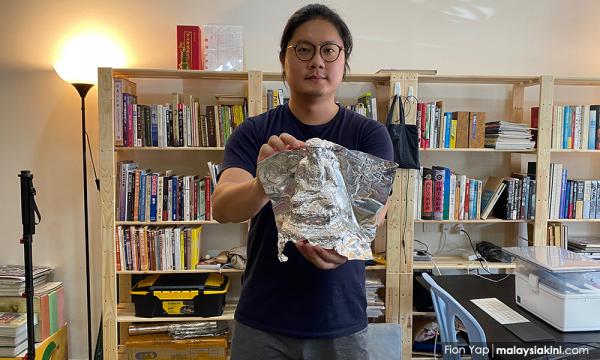MALAYSIANSKINI | When you step into the terrace house, the first thing you will see is a big Buddha statue before you enter the living room with rows of wooden bookshelves. There are two desks with a computer, books and painting sets. The smell of incense is in the air.
It’s hard to imagine this is the studio of a young artist. Thirty-year-old Kian Tan has just returned from the Taiwan Art Biennale two months ago and is now settling in Kluang, Johor - the small town where he grew up.
Over the past five years, he has completed a series of rubbing project works with various ancient tombstones and war monuments that delve into personal and collective memories; probing postcolonial conditions, immigration and the ambiguous position of the Chinese diaspora.
Rubbing, a modern revival of ancient art is the technique of transferring an engraved design from an existing textured surface onto a sheet of paper pressed tightly against a textured surface.
While others may use wax or crayon to transfer the engravings, Kian uses aluminium foil for his rubbing work.
A vision of the afterlife
His work has been exhibited in several art galleries in both Taiwan and the United Kingdom and in the 2020 Taiwan Art Bienniale themed "Sub Zoology", Kian "transported" a series of Chinese tombstones which had been erected during the British-Malayan era to the gallery in a series he calls "Paradise".
In it, he aims to capture the traditional funeral customs related to the social status of Chinese overseas leaders who came to Malaya during the Qing Dynasty (1644 to 1912) and what their imaginations of an afterlife might be.
Kian’s showroom was like an indoor cemetery with dark-blue light in the night. Shining silver...


